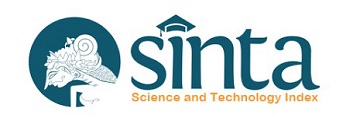Population of Potential Rattan in Bukit Tiban Protection Forest, Batam, Indonesia

Downloads
Downloads
Ariana, G., Noorhidayati., & Aminudin, P. (2011). Inventarisasi dan Kerapatan Tumbuhan Palem Suku Palmaceaeyang Terdapat di Kawasan Air Terjun Hutan Lindung Gunung Gedambaan, Desa Gedambaan, Kabupaten Kotabaru. Jurnal Wahana-Bio,5,50-68.
Andayani, D., Nurtjahya, E., & Rustiami, H. (2018). KeanekaragamanPalem di Pulau Mendanau, Belitung. Berita Biologi 17(3): 225-349.
Arifin,Y. F., & Mitlohner. (2003). Traditional Rattan Gardens in Central Kalimantan, Indonesia. XII WorldForestry Congress. Quebec City, Canada.
Departemen Kehutanan. (2009). Peraturan Menteri Kehutanan Republik Indonesia Nomor P.19/Menhut-II/2009 tentang Strategi PengembanganHasil Hutan Bukan Kayu Nasional. Jakarta, Indonesia: Biro Hukum dan Organisasi Dephut.
Departemen Kehutanan. (2010). Peraturan Menteri Kehutanan Nomor P.6/Menhut -II/2010 tentang Norma, Standar, Prosedur dan KriteriaPengelolaan Hutan pada Kesatuan Pengelolaan Hutan Lindung (KPHL) dan Kesatuan Pengelolaan Hutan Produksi (KPHP). Jakarta, Indonesia:Biro Hukum dan Organisasi Dephut.
Dransfield, J., Natalie W. Uhl., & Asmussen, C. B. (2008). Genera Palmarum: the evolution and classification of palms. Richmond, UK: Royal BotanicGardens, Kew.
Hazliansyah. (2014). 265 Hektare Hutan Lindung di Batam Terbakar. Retrived February 15, 2018, fromRepublika.co.id
Jasni, Damayanti, R., & Kalima,T. (2012). Atlas Rotan Indonesia Jilid 1. Bogor, Indonesia: Pusat Penelitian danPengembangan Keteknikan Kehutanan dan Pengolahan Hasil Hutan.
Kalima,T. (2008). KeragamanSpesies Rotan Yang Belum Dimanfaatkan di Hutan Tumbang Hiran, Katingan, Kalimantan Tengah. Info Hutan 5(2):161-175.
Kalima,T. (2014). Panduan Teknis Pengumpulan Herbarium Rotan. Bogor, Indonesia: Pusat Penelitian Dan Pengembangan Konservasi Dan Rehabilitasi.
Kalima, T., & Susilo, A. (2015).The Future Prospect of Rattan as Food Resources in Central Kalimantan. Proceeding of 6th International Conference on Global Resource Conservation. p.62-68.
Kalima,T., & Jasni. (2015). Prioritas penelitian dan pengembangan jenis andalan setempatrotan.Manajemen Perlindungan, Penelitian dan Pemanfaatan Keanekaragaman Hayati di Wilayah Perkotaan.Prosiding Seminar Nasional Masyarakat Biodiversitas Indonesia 1(8):2407–8050.
Kalima,T., & Rustiami, H. (2018). Identifikasi dan Pertelaan Jenis Rotan pulau Jawa. Bogor, Indonesia: CV SinarJaya
Kalima, T., Damayanti, R., & Susilo, A. (2019). Rotan Potensialdari Hutan Bukit Lubuk Pekak, Merangin, Jambi. Journal of Tropical Biodiversity and Biotechnology 4(1): 32-41.
Krisdianto, Jasni., & Tutiana.(2018).AnatomicalProperties of Nine Indigenous Rattan Species of Jambi, Indonesia. Indonesian Journal of Forestry Research 5(2):147-161.
Kusnaedi, I., & Pramudita, A.S. (2013). Sistem BendingPada Proses Pengolahan Kursi Rotan di Cirebon. Jurnal Rekajiva 1(2): 1-13.
Matangaran, J.R., & Puspitasari, L. (2012). Potensi dan Pemanenan Buah Rotan Jernang.Jurnal Silvikultur Tropika3(1): 65-70.
Pari, R., Abdurachman, Jasni, & Kalima,T. (2018). Klasifikasi Mutu 11 Jenis Rotan Indonesia Berdasarkan Kerapatan Dan Keteguhan Lentur. Jurnal Penelitian Hasil Hutan 36(1):13-22.
Rachmat, H.H., Fambayun, R.A., Yulita, K.S., & Susilowati, A. (2020). Ex-situ conservation and management of dipterocarps genetic resources through seedlings collections and nursery establishment. Journal of Biological Diversity21(2):556-563.
Rezkisari,I. (2014). Kebakaran Hutan Batam Meluas. Retrived FebruaryFebruary 15, 2018, from republika.co.id.
Rifardi. (2008). Ecological degradationof land and forest resources in Semenanjung Kampar peatland forest, Riau Province. Bumi Lestari Journal of Environment8(2):145–153.
Roy, B., Fahrizal., & Diba,F. (2017).Studi Pemanfaatan Rotan Oleh Masyarakat Di Desa Sekilap Kecamatan Mandor Kabupaten Landak.Jurnal Hutan Lestari 5(3): 583-591.
Setiyohadi, I. (2016). Karakteristik dan Pola Pergerakan Penduduk Kota Batam dan Hubungannyadengan Perkembangan Wilayah Hinterland. Jurnal Dimensi1(1):1-18. Universitas Riau Kepulauan.
Suharti, S. (2015). Peningkatan pendapatan masyarakat meleluibudidaya komoditas Aneka Usaha Kehutanan (AUK). Seminar Nasional Masyarakat Biodiversitas 2(3): 1416-1419.
Yuliastrin, A. (2014).Analisis Kadar Hara Makro Tanah Yang Ditumbuhi Populasi Bintangur (Calophyllum spp.). Studi Kasus di Hutan Lindung Sei Tembesi dan Bukit Tiban, Batam. [Final Report]. UT Batam UniversitasTerbuka.
Witono, JR., Rustiami, H., Hadiah, JT., & Purnomo. (2013). Panduan Lapangan Pengenalan jenis Rotan Katingan. Indonesia: WWF-Indonesia Program Kalimantan Tengah.








